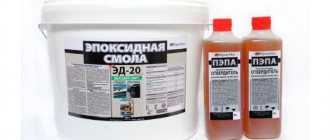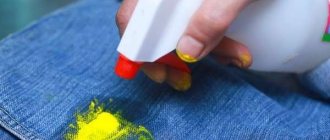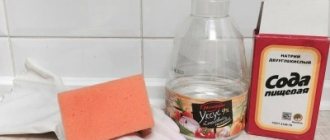Share
Tweet
+1
Pin
Most people have a love of reading and an attachment to good literature. Many people have been collecting rare and favorite publications for years, storing copies of books and re-reading them over and over again. Indeed, a good, complete home library is an absolute source of pride for its owner. Provided that the books are stored correctly and are in excellent condition.
But how can we ensure that, over time, books do not lose their properties and do not deteriorate? There are several rules, adhering to which it is quite possible to preserve books in their original condition.
Dust control
Literature should be stored in racks or on glass shelves. Such furniture will help prevent dust from getting on the books. It is known that dust is the most dangerous enemy of any printed publication. Even with minimal humidity, dust has the ability to decompose, which subsequently leads to the appearance of mold and mildew. If it so happens that dust has leaked through the closed shelving, then dry cleaning or a vacuum cleaner can get rid of it.
How to Store Books to Save Space
To save space, use space in the room economically and practically, use corner shelves. They will not clutter up the apartment like cabinets, but will visually expand the room. In addition, corner shelves look stylish and original.
An alternative solution is to arrange shelves under the ceiling. They will save space, but getting the right book will be problematic. In addition, using massive shelves and storing a large number of books creates an overwhelming feeling.
For a small apartment, you can choose modern multifunctional furniture. Here, open bookshelves are located at the head of the bed or sofa, and spacious drawers are located directly under the bed. For a children's room, you can use retractable modules on wheels.
By the way, you can store children's books in special organizers. You can make textile pockets with your own hands or hang holders above the crib, on the back of a sofa or chair, on a door or on a wall.
Storing things in plastic or metal baskets is another practical and functional option for a nursery. Such products will save space in the room and teach the child to be tidy. How to teach children to clean, read this article.
An original option would be a library chair. In this case, along the perimeter of the chair there are shelves of different sizes, where it is convenient to fold and store various books and magazines. At the same time, the chair can be conveniently moved to any place and any room. In summer and warm weather, the chair can even be taken out to the balcony or loggia.
In a compact and small apartment, think about how you can effectively use the space by the window. Modern designers propose to arrange a practical and functional reading area in this place. Install shelves for books on the sides, above or below the window (provided that radiators are not placed under the window sill).
Detailed accounting
In the case where the book library contains an impressive number of literary publications, it is worth thinking about compiling a catalog in which the available assortment will be kept track of. In such a catalog you can write down all the necessary information about the books: where they are located, their exact title, author’s initials, year of publication, etc.
It is not particularly important in what form this catalog will be presented; it can be either a handwritten notebook or a table in a computer program. The only remark: the computer version will be more practical, because thanks to the document search, the necessary information will be found in a couple of seconds.
It’s hard to disagree with the fact that for many, books are wealth. Wealth that needs proper storage and proper treatment. They will definitely serve you, your children and even grandchildren faithfully for decades if you care for them carefully and thoughtfully.
Caring for books
Recently, people are increasingly giving preference to electronic media, but, contrary to forecasts, traditional paper books have not yet gone out of use. Many people have their own library - large or not. In order for books to last as long as possible and remain in perfect condition, proper care of books is very important.
Caring for books can be divided into several categories: storing books, using books and restoring books. Proper storage of books is the key not only to their safety, but also to your health, because nothing collects dust like books.
Caring for books begins with choosing the right place to store them. First of all, the books need to be sorted out and sorted into groups (by authors, genres, size - whatever is more convenient for you). Set aside books that you will not read separately. You shouldn’t throw them away; it’s better to give them to your local library - they will be happy to replenish the collection. Put aside worn books that need a mini-restoration and deal with them later.
Books are afraid of direct sunlight, so it is better to install bookshelves and racks perpendicular to the window. It is better to use incandescent lamps to illuminate the room: they will not damage the books. Proper care of books also means their correct arrangement. Toms should not be placed too tightly. It is better not to place books in two rows, even if you want to save space: the back row will have nothing to “breathe” and more dust will accumulate there. When removing a book from a shelf, do not grab it by the spine - it may tear. Books must stand upright. If there is not enough space on the shelf, make sure that they do not stand at an angle.
To avoid confusion in your library, arrange the books in a specific order and create a book catalog. Fortunately, the computer allows you to keep it electronically, so you don’t have to allocate space at home for file cabinets.
Books are afraid of dust and dampness. Therefore, it is better to store them not on open shelves, but in a closet or on a rack with doors. For the same reason, caring for books requires regular ventilation of the room. Also, books are afraid of tobacco smoke. You need to wipe books from dust 2-3 times a year, using a vacuum cleaner and a well-wrung out damp cloth. Bookshelves also need to be wiped down, and if they are covered with glass, the glass should be washed. The best conditions for storing books are a temperature of 18-20 °C with 50-60% humidity. If the books are still damp, ventilate the cabinets and wipe the books with a soft, dry cloth.
When reading, you also shouldn’t forget about caring for your books. Always use bookmarks. For these purposes, you cannot use foreign objects, much less bend the corners of the pages. To prevent the cover from getting dirty when reading, wrap the book in plastic or paper. You cannot pick up a book with dirty hands or read while eating. Under no circumstances should you tear out pages and write on them, even with a pencil. It is best to read books on a hard surface. Do not try to open the book all 180 degrees - the binding may not hold up.
If some kind of trouble does happen to your book, it’s worth remembering the third component of caring for books—book restoration. Of course, professional restoration of books is beyond your capabilities, but the average reader is quite capable of such aspect of book care as removing stains. Grease stains can be removed using gasoline or a mixture of gasoline with crushed soap or burnt magnesia. A fresh stain can be sprinkled with dry crushed chalk and ironed through white paper. Rust stains can be removed using citric acid. Mold is removed with ammonia or a 2-3% formaldehyde solution, and the remaining stain can be removed with hydrogen peroxide. Finger stains should be wiped with soap, then with a clean damp cloth. Let the page dry between sheets of tissue paper. Any stains must be removed carefully so as not to damage the text!
When caring for books, you need to protect them from harmful insects. If you notice that there are uninvited tenants on the bookshelves, collect the books in plastic bags and pour moth repellent into them. In advanced cases, you can use pesticides. Remaining insect stains can be removed using alcohol vinegar, a 9% acetic acid solution, or a mixture of glycerin and ammonia (4:1 by weight). A cotton swab is moistened in liquid, gently wipe the contaminated area, rinse with warm water and dry between sheets of blotting paper under light pressure.
Restoration of books that have fallen under water is carried out as follows. The book is placed in a warm and dry room that is well ventilated. When the book is dry, but not completely dry, it is placed under a press. The glued sheets are carefully separated using a ruler, and the wet sheets are laid out with tissue paper. After a day, the sheets that have not had time to dry are ironed through filter paper.
The wrinkled pages of books are ironed between sheets of white paper. The iron should not be hot! If a page is torn, glue it back with tissue paper.
In order for your books to serve you faithfully, proper book care is necessary. If, after all, something happens to the book, and you need to return it to its original appearance, restoring books at home will come to the rescue.
Related publications:
What to do with old books?
If children grew up and stopped going to school and graduated from college, then what remains are children's books and textbooks from college times. Women who became mothers read publications on the topics of pregnancy, childbirth, and education. Books are no longer needed, what to do with such publications? We offer the following options:
- library;
Every city has libraries. Sometimes even several. Call and ask if libraries accept books.
Old books can be donated to the library
Libraries accept books free of charge.
– special shops;
There are specialty stores, pawn shops or consignment shops. You can bring books and get money for them or get another one. In such stores the amount for books is small, from 20 rubles per book. Next, the store puts its own markup and makes money by paying less for the book edition than it costs.
You can bring books to thrift stores and get money for them
In some online stores you can see advertisements “bring a book in good condition and get a new one.” There are special shelves where you can take another one in exchange for your book. The pawnshop accepts rare and collectible publications.
– free bulletin boards;
You can give away or sell books for a small amount. For this, there are special free notice boards in the city; they are made of wood and are located at the entrance or on free notice sites on the Internet. There are special applications for mobile devices that make it easier to place ads and sell.
– specialized forums and websites;
Mothers often communicate on children's and family forums, plant lovers on flower forums. Now there are groups by school number, district, city and you can find them. If there are none, then you can create them yourself. Creating groups on social networks is free.
– books in parks;
In many park areas you can see a small cabinet containing books and magazines. If you have unnecessary books in your house, take them to the park.
Bookcase in the park
– bookcrossing.
What is bookcrossing?
A person reads a book, then leaves it in a public place and indicates this on a special resource. Another person sees this information and comes to that place and takes the book and then does the same.
Literally translated, this is moving books, free books, a kind of book club. Initially it was common in Italy and then spread throughout the world. At the end of 2014, the most active country in this movement was Germany.
Special box for book exchange
Some writers, publications or stores can advertise and promote themselves in this way. You can attach a sheet with the date and last name and then you will see how many people have already read this publication.
Sometimes bookcrossing may be interrupted, because an ordinary person who does not participate in this marathon, but just likes to read, can take the book for himself.
Proper organization of book storage
Before placing your book collection in a storage location, make sure that it is located away from batteries and away from sunlight, which can cause significant damage to the paper.
Shelves
The most accessible and inexpensive option for owners of a small book collection. The downside is that the shelves are open, so books will need to be dusted frequently.
Shelving
Bookshelves are multifunctional, and thanks to the huge variety, you can find one that will fit into any apartment interior. The downside is the same openness of the shelves, where dust quickly accumulates.
Organizers for books
Book organizers do not take up much space in the room due to their compactness. They are suitable for placing the work you are reading at the moment. Organizers come in different types:
- boxes;
- stands;
- from textiles;
- in the form of baskets.
This storage device will be convenient for you because it is easy to move from one place to another.











